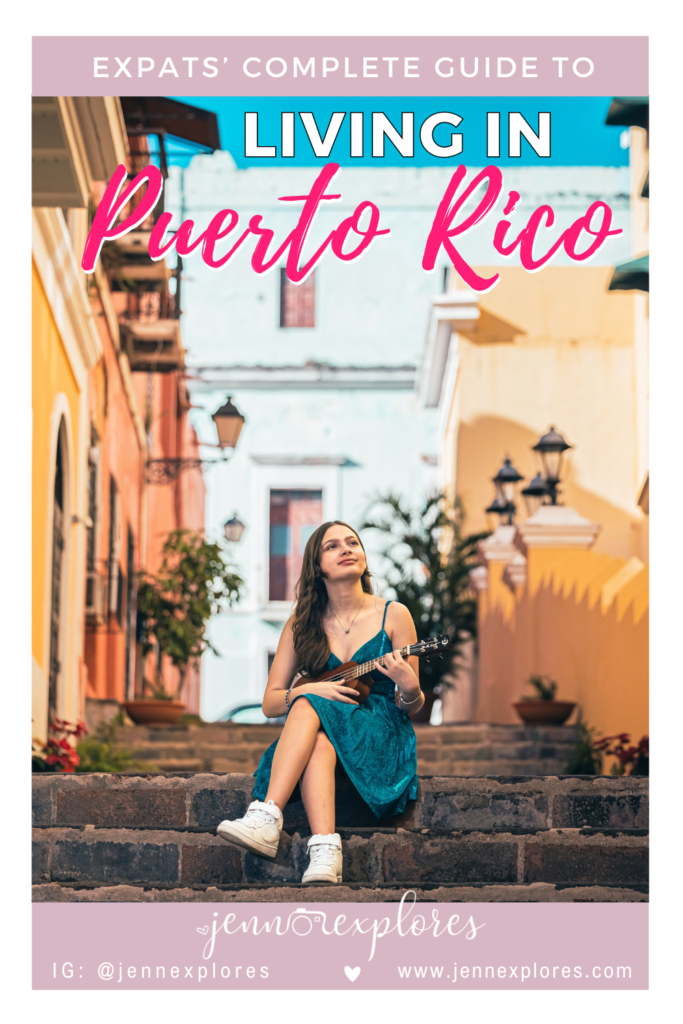 Thinking of trading your current view for sunny days, stunning beaches, and a vibe that’s as warm as the weather? Puerto Rico, a lush U.S. territory nestled among the Caribbean islands, is calling your name! This vibrant slice of paradise offers more than just beautiful beaches and crystal-clear waters; it just might be the perfect spot to move to for US citizens and digital nomads alike, looking for an island lifestyle with all the perks of home.
Thinking of trading your current view for sunny days, stunning beaches, and a vibe that’s as warm as the weather? Puerto Rico, a lush U.S. territory nestled among the Caribbean islands, is calling your name! This vibrant slice of paradise offers more than just beautiful beaches and crystal-clear waters; it just might be the perfect spot to move to for US citizens and digital nomads alike, looking for an island lifestyle with all the perks of home.
From the historic streets of the capital city of San Juan to the pristine beaches that line the coast, Puerto Rico melds the best of both worlds: easy access to the mainland United States without giving up the unique culture and warm welcomes of island life. Whether it’s the friendly people, the vibrant Puerto Rican culture, or the international schools for those moving with families, this territory of the United States has become one of the best places for those seeking a change of scenery without straying too far from home comforts.
For those dreaming of beautiful places where warm weather and sunny days are the norms, and where the blend of a laid-back lifestyle meets a rich, vibrant culture, Puerto Rico stands out. Living in Puerto Rico is an opportunity to immerse yourself in a unique culture, surrounded by some of the most stunning beaches and beautiful landscapes the Caribbean has to offer.
Ready to learn all about living in Puerto Rico and explore the pros and cons of your new life in this beautiful place? Let’s go!
Table of Contents
Toggle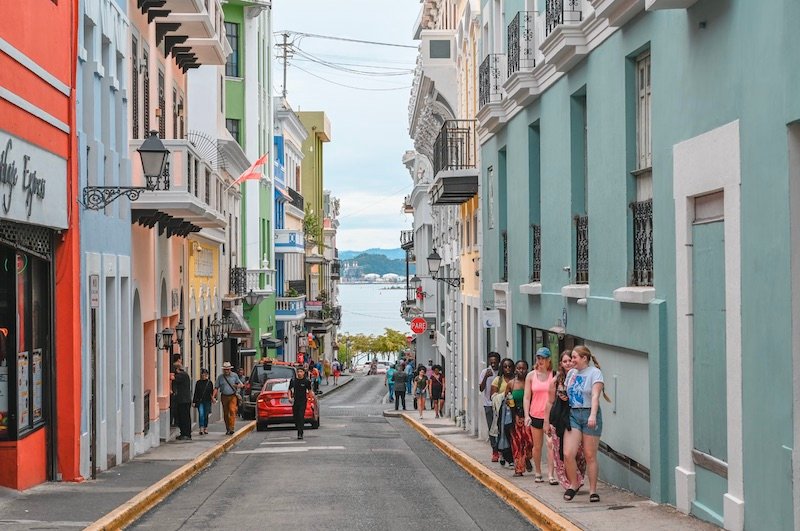
Cost of Living in Puerto Rico
To live comfortably in Puerto Rico, a single person would need to budget about $1,500-$2,500 USD per month.
Here’s a breakdown of what to expect for monthly expenses in Puerto Rico (in USD):
Monthly Rent: $400-$900
Utilities: $150-$200
Cell Phone: $30
Wifi: $60
Groceries: $350
Eating Out: $300
Entertainment: $150-350
Gas: $0.94/L
Living in Puerto Rico offers a unique blend of tropical lifestyle and financial advantages, thanks to its lower cost of living compared to many parts of the United States.
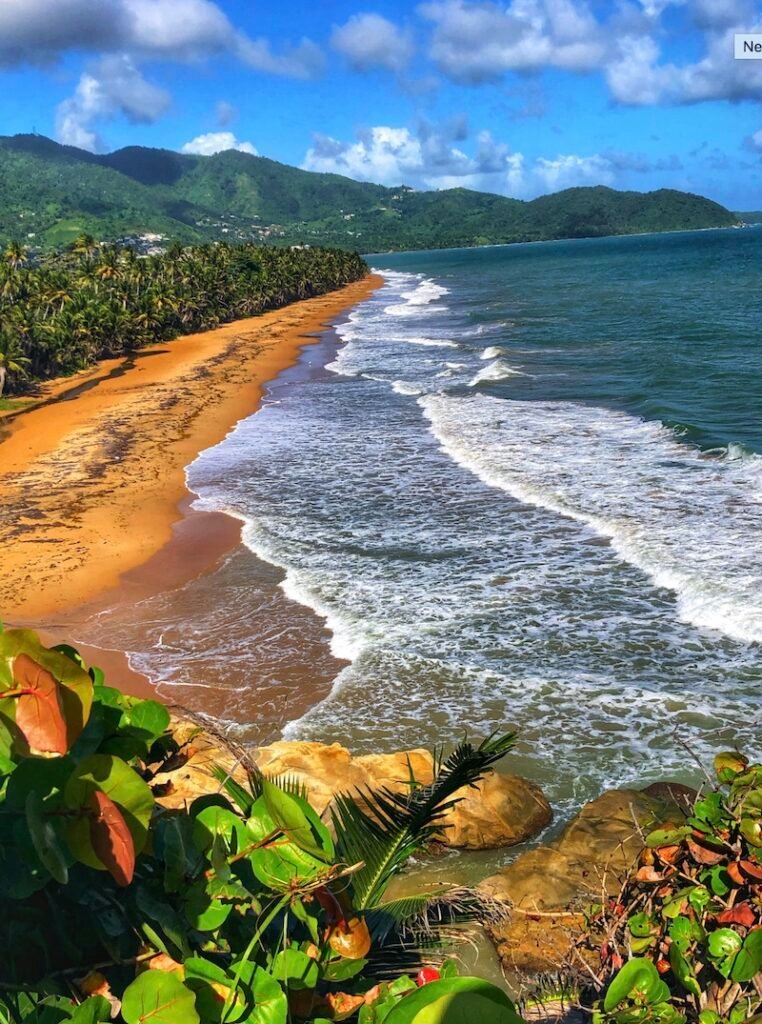
Cost of Rent in Puerto Rico
In Puerto Rico, you might find yourself shelling out anywhere from $450 to $800 a month on rent. Of course, this price tag varies depending on where you decide to drop your anchor and the kind of digs you’re after – simple, or luxury.
Eyeing a cozy spot for one in bustling San Juan? That’ll run you more than a spacious setup in a sleepy town.
But here’s the kicker – the island’s packed with options. Whether you’re hunting for a simple apartment, a sprawling house, or even a beachfront hideaway, there’s a good chance you’ll snag something that fits your unique budget and style.
Cost of Food in Puerto Rico
The island is also a great place for foodies, with local markets offering fresh, local food at prices that won’t break the bank.
On this tropical island, the amount of money you spend on food can vary widely, thanks to a plethora of options catering to every taste and budget. Puerto Rican food, a vibrant blend of flavors, is accessible through a range of venues, from food trucks offering mouth-watering street food starting at $5-$10, to high-end and upscale restaurants where luxurious meals begin at $40. Casual and mid-range dining spots provide a happy medium, with meals priced between $10 to $40.
For those on a tight budget, the island’s food trucks, in particular, are a must-try, serving up local delights that are as delicious as they are affordable.
For those looking to stretch their dollar further, shopping at one of Puerto Rico’s many afforable supermarkets are an excellent choice, offering lower-priced options for home-cooked meals or quick snacks.
Tipping is customary here, with 15-20% the norm in restaurants—just be sure to check if it’s already been added to your bill.
Whether you’re indulging in the rich culture of Puerto Rican cuisine or cooking up your own feast with ingredients from a local market, how much money you spend will largely depend on your choices. But not to worry, as Puerto Rico offers something to satisfy every palate without breaking the bank.
You can further explore the costs of food items in Puerto Rico here: Numbeo – Food Prices in Puerto Rico.
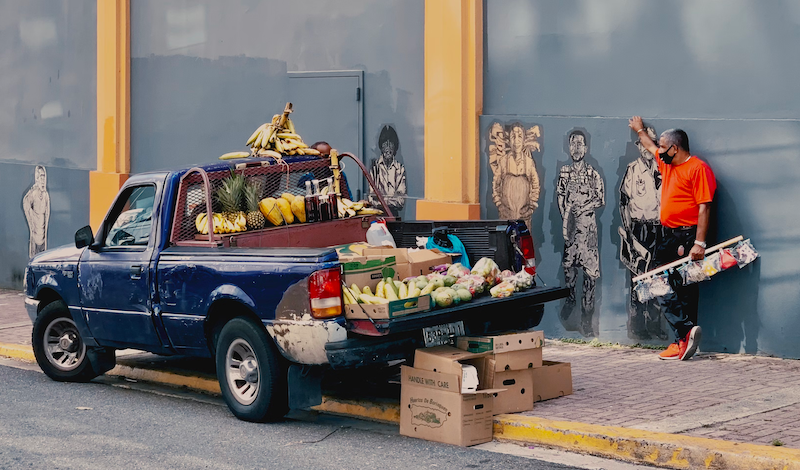
Quality of Life in Puerto Rico
Puerto Rico offers a diverse quality of life, combining modern amenities with rich cultural traditions. Residents enjoy a laid-back lifestyle against a backdrop of stunning natural beauty, from beaches to mountains.
Challenges include infrastructure and healthcare system issues, and areas affected by natural disasters may still be recovering. The cost of living is lower than in many U.S. cities, but varies by location. Social and community life is vibrant, with numerous festivals and events celebrating Puerto Rican heritage.
Is Puerto Rico Safe to Live?
Puerto Rico is generally considered safe to live in, with the central part of the island viewed as the safest. However, like any location, safety can vary by area, and the crime rate in Puerto Rico is around 51.82 per 1,000 residents in a standard year.
In more urbanized areas, such as San Juan, and in the northeast neighborhoods, residents might experience higher crime rates, with chances of being a victim as high as 1 in 15. Conversely, in the central regions, the likelihood decreases to about 1 in 24.
While the island offers a wonderful blend of cultures, beautiful landscapes, and a relaxed lifestyle, residents and potential expats need to stay informed about their specific localities, take standard safety precautions, and consider these statistics when deciding where to live.
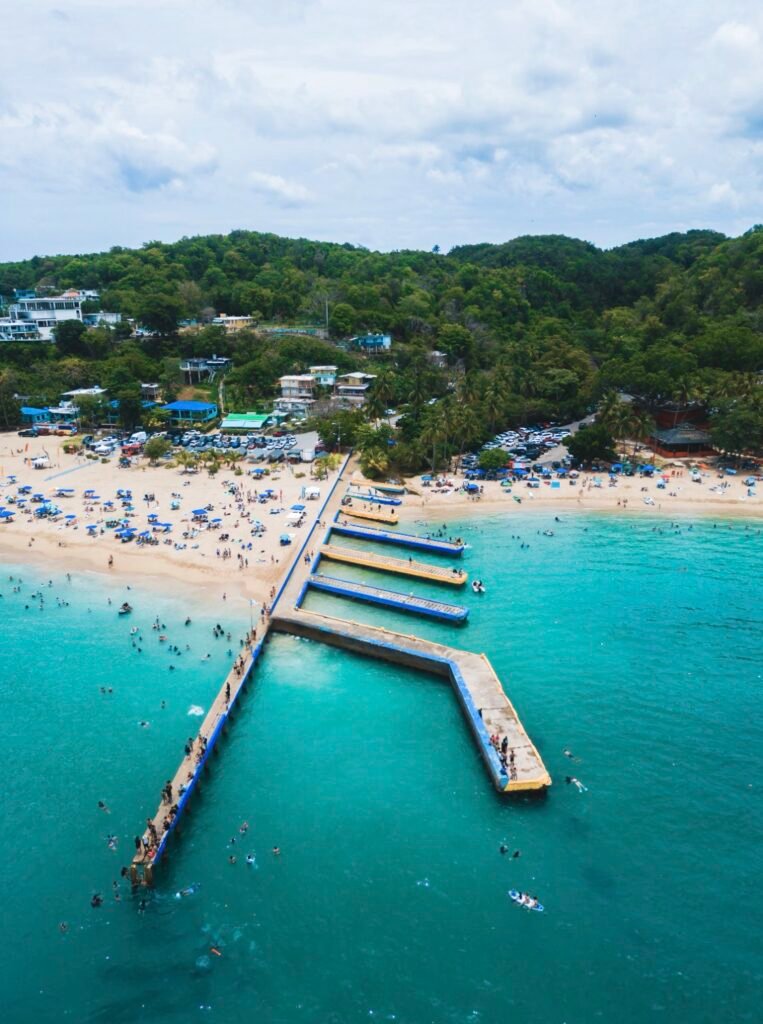
Weather in Puerto Rico
Puerto Rico boasts that gorgeous “endless summer” vibe with its tropical climate, ensuring plenty of sunshine and warm temps ranging between 70°F and 85°F (21°C to 29°C) pretty much any day you step outside – perfect for those of us who thrive in flip-flops and shorts!
But, it’s not all sunbathing and smooth sailing; the island does have its rainy season kicking in from April through November. Expect some spontaneous downpours, often in the afternoons, which can actually be a cool break from the heat. Then there’s hurricane season, from June to November. While it’s not a yearly drama, it’s definitely something to keep on your radar.
Despite these natural curveballs, the weather’s mostly a win if you’re into outdoor adventures or just chilling by the beach. Just make sure you’re stocked up on water and sunscreen, and keep an eye on the weather updates during those stormier months.


Looking to live in another paradise with gorgeous weather?
Average Cost of Living in Hawaii – What to Expect
Heathcare in Puerto Rico
Healthcare is another important factor to consider. While private health insurance is available and provides access to a wide network of private healthcare facilities, the overall cost of health insurance remains reasonable. This ensures that both routine and specialized care are accessible to those living on the island. You might wish to consider an excellent travel medical insurance, such as Safetywing, who I use.
When it comes to daily expenses, the average cost of living is balanced by the lower property taxes, making homeownership more attainable for many. However, it’s important to note that the sales tax can be higher than in some states, which is something to keep in mind when budgeting for shopping and dining out.
Public Transportation in Puerto Rico
Public transportation options are available, offering an economical alternative to owning a car. This can further reduce the overall cost of living for those who live in more urban areas where amenities are within walking distance or a short bus ride away.
Working Wage in Puerto Rico
In Puerto Rico, the minimum wage saw an increase on July 1, 2023, to $9.50 per hour from the previous rate of $8.50 per hour. This adjustment is part of a series of planned raises, with the next one aiming to elevate the minimum wage to $10.50 per hour by July 1, 2024. This gradual increase reflects efforts to improve the working wage in Puerto Rico, providing a clearer picture of the earnings landscape for employees across the island.
Despite these financial advantages, it’s crucial to consider the average hourly rate for work, as it may be lower than in the mainland US. This can impact your overall budget and should be factored into any cost of living calculations, should you wish to work while living in Puerto Rico.
Puerto Rico offers an appealing option for those seeking an island paradise without the high costs associated with similar destinations. With its mix of affordable living expenses, lower property taxes, and the charm of local food and culture, the island of Puerto Rico stands out as an attractive location for both expatriates and locals alike. The key to making the most of this opportunity lies in balancing the lower cost of living with the income potential and embracing the vibrant lifestyle that this beautiful island has to offer.
![]()

Moving to Puerto Rico
Moving to Puerto Rico is a pretty straightforward process, especially if you’re already a U.S. citizen. Since Puerto Rico is a U.S. territory, Americans can move there without needing a visa or going through extensive immigration procedures. You’ll still want to get your documents in order, like any move, which means updating your address for mail, ensuring your driver’s license is up to date, and transferring any necessary insurance policies.
One of the first steps is to figure out where you want to live. Puerto Rico offers a range of living experiences, from the exciting city life of San Juan to the more laid-back vibes of smaller towns and beach communities. Once you’ve got a place in mind, the hunt for housing starts. Renting in a neighborhood you’re considering can be a good way to get to know the island before committing to buying property.
Bringing over your belongings might require some coordination, especially if you’re moving a lot of stuff. Shipping services can handle most of your items, but it’s worth comparing prices and services to find the best deal. If you’re bringing a car, you’ll need to go through the proper channels to ensure it’s registered and insured in Puerto Rico.
Setting up utilities and getting connected to the internet and phone services is another task to tick off the list. It’s similar to doing so in the mainland U.S., but it’s always a good idea to ask locals or your new neighbors for provider recommendations.
Finally, integrating into your new community and embracing the local culture and lifestyle will make your transition smoother. Puerto Ricans are known for their warmth and hospitality, so don’t hesitate to get involved in local activities and events. It’s a great way to make new friends and truly start feeling at home in your new tropical paradise.
![]()
Can You Drink the Water in Puerto Rico?
Yes, the CDC confirms that Puerto Rico’s tap water is generally safe to drink. Despite this, many locals prefer bottled water, which is often considered better quality, especially in less urbanized areas where tap water might not be as thoroughly filtered.
In places like San Juan, the water is usually fine, but if you’re in doubt or in more rural locations, opting for bottled water is a wise choice.
For those planning to stay awhile, investing in a filtered water system or filtered water bottle could be a smart move, saving money over time and reducing environmental impact.
![]()
Do You Need a Visa to Live in Puerto Rico?
If you’re from the U.S., moving to Puerto Rico is a breeze, with no visa needed.
For non-U.S. citizens, though, a visa is a must before making the move. The go-to is usually a tourist visa, which lets you stay on the island for up to 90 days.
Planning on staying longer? You’ll need to look into other visas, like student or work ones. To get this sorted, you’ll have to go through the visa application process.
You can view Puerto Rico Visa requirements, process and apply for a Visa here.
![]()
Pros of Living in Puerto Rico
Pro: Puerto Rico’s Stunning Scenery
Puerto Rico is not just one island, but one gorgeous main island surrounded by smaller ones, each showcasing its own slice of paradise. We’re talking beaches with sand so fine it slips through your fingers, mountains cloaked in fifty shades of green, and waters so clear you can see your reflection. It’s this stunning natural beauty that draws folks into Puerto Rico, whether you’re here for a quick visit or planning to move permanently.
Craving some beach time, a mountain adventure, or a dip in the ocean? Puerto Rico delivers, offering a bit of everything for the nature enthusiast, the adventure seeker, or anyone just looking to soak in some scenic views.
Pro: Close to the USA
Puerto Rico’s status as a US territory brings a host of conveniences for those with ties to the mainland. Its proximity means that hopping between Puerto Rico and the US is a breeze, making it an ideal spot for those who value ease of travel. Without the need for a passport and the ability to use US currency, trips to the island feel seamless and straightforward.
Also, being a US territory means that Puerto Ricans hold US citizenship, complete with all its rights and privileges. This aspect simplifies not just travel but living arrangements, work, and access to services, mirroring the experience on the mainland. For those looking to maintain close connections with family and friends in the US, Puerto Rico offers a perfect blend of accessibility and tropical living.
Pro: Good Quality of Life
Puerto Rico shines for its high quality of life, distinguishing itself significantly from other countries in the region. The island manages to maintain a relatively low cost of living without compromising on the abundance of amenities and services it offers. Health care is a prime example, with Puerto Rico home to some of the most reputable hospitals in Latin America. The education system is another area where the island excels, providing a wealth of options between private and public schools. This blend of affordability and quality in essential services makes Puerto Rico an attractive place to live.
Pro: Endless Summer Vibes
In Puerto Rico, it’s like summer never ends. This eternal warmth isn’t just a dream come true for those looking to ditch the chill; it’s practically a beacon for retirees and digital nomads searching for their own slice of sunny paradise, where they can spend lots of time outdoors soaking in the sun and stunning weather.
Pro: A Beach Lover’s Paradise
Puerto Rico boasts some of the planet’s most incredible sandy shorelines. If your idea of bliss is a quiet corner of sand or a vibrant beach with perfect waves, you’re in luck. Among the gems, Playa Flamenco on Culebra Island shines with its postcard-perfect views, while Playa Sucia on Vieques Island offers breathtaking landscapes. It’s a beachgoer’s dream, with every coast offering something unique.
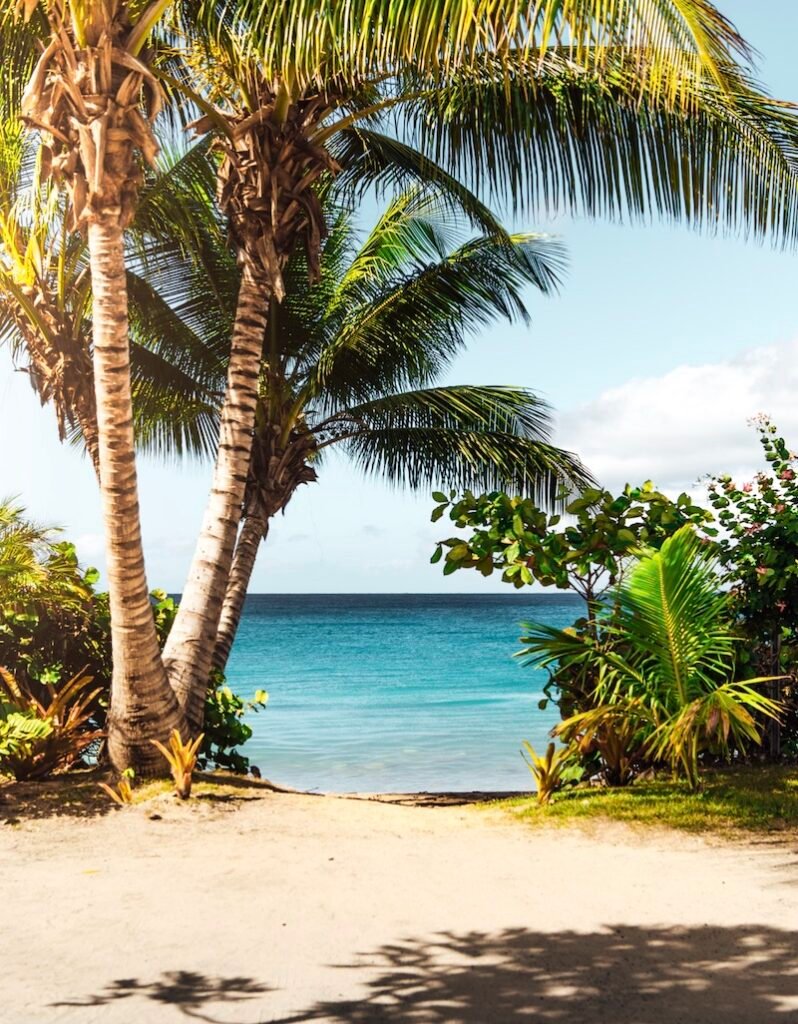
Pro: Cost of Living is Low
Puerto Rico offers an appealing advantage with its lower cost of living, especially when compared to other Caribbean islands. Everyday expenses like groceries and eating out won’t break the bank, making it easier to enjoy what the island has to offer without constantly worrying about your budget. Housing also presents an opportunity for savings, particularly for those open to residing a bit off the beaten path from the bustling city centers. This cost-effective lifestyle isn’t just a small perk—it’s a significant draw, especially when you consider the substantial savings compared to the cost of living in the US. This makes Puerto Rico an attractive option for anyone looking to stretch their dollar further while soaking up the island life.
Pro: Healthcare
Puerto Rico stands out for offering healthcare that matches the standards of the US mainland, ensuring residents have access to top-notch medical services. The island is equipped with numerous hospitals and clinics, providing comprehensive care across various specializations. With a cadre of world-class doctors and surgeons calling Puerto Rico home, the quality of medical treatment available is exemplary.
or those moving to the island, considering private health insurance is a wise move unless you’re covered by Medicaid, which is also accepted here due to Puerto Rico’s status as a US territory. This ensures seamless access to the high-quality healthcare system for all residents.
Con: Puerto Ricans are Friendly and Welcoming
One of the brightest highlights of living in Puerto Rico is the warmth and friendliness of its people. Puerto Ricans are renowned for their welcoming nature, often extending hospitality that goes beyond mere politeness. Don’t be surprised if you find yourself invited into someone’s home, even if you’re a newcomer. This openness is a testament to the island’s communal spirit.
Puerto Ricans hold their culture and heritage in high regard, displaying a palpable pride in their identity. They’re eager to share the richness of their traditions, music, art, and cuisine with anyone willing to learn. This vibrant cultural tapestry not only enriches the experience of living in Puerto Rico but also contributes to the island’s allure as a place that truly feels like home.
Pro: Great for Digital Nomads and Remote Workers
Another standout advantage of Puerto Rico is its appeal to digital nomads and remote workers. With its reliable internet connectivity, array of coworking spaces, and the added bonus of being in a similar time zone to much of the mainland US, the island has become a hotspot for those looking to blend work with tropical living. The lower cost of living, combined with the ease of speaking English, makes it an even more attractive destination. Puerto Rico not only provides the essentials for remote work but also enriches the experience with its unique culture and vibrant lifestyle, making it an ideal base for those who live and work on their own terms.
Pro: Great Private Education
One of the standout perks of relocating to Puerto Rico, especially for families or couples wishing to have a family, is the availability of top-tier private education. The island is home to numerous private schools, each offering diverse educational philosophies and curriculums to cater to a variety of preferences and needs. While these institutions do come with a higher price tag than public schools, they are still notably more affordable than their counterparts on the mainland US. This makes private schooling in Puerto Rico an excellent investment in your children’s future, promising a quality education that can pave the way for their success.
Pro: English is Widely Spoken
A huge plus for many moving to or visiting Puerto Rico is the widespread use of English across the island. While Spanish is the heart and soul of the local language landscape, English is widely spoken, particularly in tourist areas, major cities, and by younger generations. This linguistic accessibility eases the transition for newcomers and facilitates everyday interactions, from shopping and dining out to navigating services and making new friends. Whether you’re fluent in Spanish or just learning, the bilingual nature of Puerto Rico means you’re less likely to face language barriers, making it a smoother, more inclusive experience for everyone.
Pro: Amazing Coffee and Food
In Puerto Rico, the feast for your senses extends beyond the picturesque landscapes to include a culinary journey that’s as rich and diverse as its culture. The island’s cuisine, a delicious testament to its Spanish, African, and Taíno heritage, ensures that your dining experience is nothing short of extraordinary. With an array of dishes that captivate with every bite, the promise of never tiring of Puerto Rican flavors is easily kept.
But the sensory delights don’t stop there. Puerto Rico also prides itself on producing some of the world’s finest coffee, renowned for its robust flavor and distinctive aroma. The local coffee scene is vibrant, with numerous brands each offering a unique taste that reflects the island’s rich coffee-growing tradition. Whether you’re savoring the complex flavors of Puerto Rican cuisine or indulging in its celebrated coffee, the island ensures that there’s always something new and exciting to discover. Here, the joy of exploration is as much about the food and drink as it is about the beautiful destinations.
![]()
Cons of Living in Puerto Rico
Con: Slower Pace of Life
For those accustomed to the hustle and bustle of city life, Puerto Rico’s laid-back tempo might catch you off guard. Here, the pace of life leisurely unfolds, and the local attitude mirrors this tranquility and passivity. This calm approach permeates through daily routines, from driving habits to business operations. It’s pretty standard for shops to pause operations midday, allowing staff a home retreat for lunch and perhaps a siesta.
This shift from the go-go-go mentality prevalent in places like New York City can be a source of frustration for newcomers eager to tick off their to-do lists rapidly. However, embracing this slower pace can be a refreshing change for many people, encouraging a more relaxed approach to life. Give yourself some time to adjust, and before you know it, you might just that this slow pace of life is just what you need!
Con: Hurricane Season
While Puerto Rico basks in the glory of the Caribbean, boasting endless sun and pristine beaches, it’s not without its challenges. Among these, hurricanes stand out as a significant concern. The island finds itself in the path of these mighty storms, with hurricane season stretching from June to November.
For those considering Puerto Rico as a new home, it’s crucial to be prepared. Having a solid hurricane plan and ensuring your property is adequately insured are not just recommendations; they’re necessities. This preparation can make all the difference in safeguarding your home and well-being during the storm season.
Always make sure you have a solid travel insurance provider, such as my favourite: SafetyWing Travel Insurance
Con: Mosquitos, Sand Fleas, Other Pests
While Puerto Rico’s beaches are undeniably stunning, they do share their paradise with some less-than-welcome inhabitants: mosquitos and sand fleas. These tiny pests can quickly turn from a minor annoyance to a significant concern, particularly after sunset when they become most active.
To keep these critters at bay, don’t forget to pack a good bug spray and opt for light-colored clothing which tends to attract fewer mosquitos. Staying informed and up-to-date with vaccinations is key, as Puerto Rico has reported cases of Dengue Fever and Zika virus. Taking these precautions will help ensure your time on the island is spent enjoying the scenery rather than dealing with bites.
Con: Crime Rates
Puerto Rico, despite its many attractions and high quality of life, faces significant challenges with crime. Violent crime, especially, poses a real concern across the island. It’s notable for having one of the highest murder rates globally, placing it in a daunting position when compared to other regions.
When we draw comparisons within the United States, Puerto Rico ranks as the 20th city in terms of murder rates, aligning closely with cities like Chicago on a per capita basis. The issues of drugs and gang-related violence are particularly pronounced, affecting mainly those in impoverished conditions or living in public housing.
For anyone considering a move to Puerto Rico, it’s crucial to conduct thorough research on potential neighborhoods and adopt safety measures to mitigate the risk of crime. Being informed and cautious can help navigate these challenges more effectively.
Con: Public Transit Infrastructure
Navigating around Puerto Rico can present a bit of a challenge due to the less developed public transportation system, especially when you stack it up against what’s available in the mainland US. The reality on the island is that cars reign supreme as the primary mode of transport. Public buses and trains are few and far between, making it tricky for those without personal vehicles to explore or commute.
In the capital, San Juan, while there are some options for public transit, they tend to fall short on reliability. So, if you’re moving to Puerto Rico with plans to rely on public transportation, it’s wise to thoroughly research your options ahead of time and always have a Plan B up your sleeve for those days when the system just doesn’t cooperate.
Con: Pricey Imported Goods
While Puerto Rico offers the allure of a lower cost of living, its island status brings with it a caveat: the price of imported goods tends to be higher. Everyday essentials, such as shampoo and toilet paper, often carry a heftier price tag compared to their mainland US counterparts. This trend extends to larger purchases and necessities too; for instance, both cars and gasoline have higher prices on the island. This aspect of island living is essential to factor into budgeting, especially for those planning to make Puerto Rico their new home.
Con: Poor Job Market
Navigating the job market in Puerto Rico presents its own set of challenges, particularly for those who aren’t fluent in Spanish. The available positions often lean towards the lower end of the pay scale, generally requiring minimal skills or experience. This reality underscores the importance of securing employment before making the move to the island.
Puerto Rico’s economic struggles in recent years have significantly impacted job availability, contributing to the limited opportunities. However, the tide is gradually turning, with the job market showing signs of improvement, signaling a slow but steady economic recovery.
Con: Poverty Rates
Puerto Rico’s economic landscape is marred by high poverty rates, with the situation being notably more severe than on the US mainland. This issue is particularly acute in rural areas, where approximately one-third of the population lives below the poverty line. The reliance on government assistance to cover basic needs is a reality for many families, underscoring the gravity of poverty on the island.
For those considering making Puerto Rico their home, it’s crucial to recognize the extent of poverty and its implications. Awareness and precautionary measures are advisable to safeguard against potential crime, a concern often intertwined with poverty levels. Understanding the socio-economic context can help in making informed decisions and preparations for life in Puerto Rico.
![]()
Best Places to Live in Puerto Rico:
There are many different places to live in Puerto Rico, so as you research, it’s good to have an idea of a handful of places you’re interested in learning more about.
Here’s a list of some (in my opinion) of some of the best places to live in Puerto Rico, each offering its unique charm and appeal:
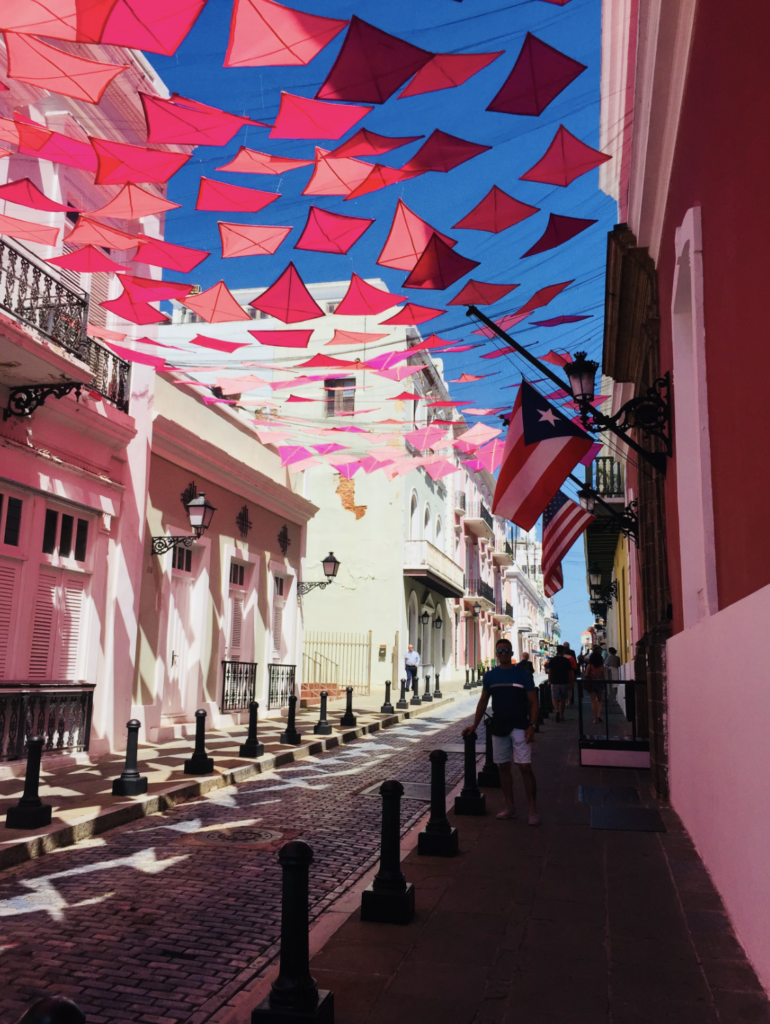
Old San Juan
Old San Juan is the heart of Puerto Rican heritage, with its cobblestone streets, colorful colonial buildings, and historic forts. Living here means being surrounded by the island’s rich history and culture every day.
Condado
Condado is known for its luxury, featuring high-end shops, beachfront resorts, and upscale dining. This neighborhood is perfect for those seeking a sophisticated urban lifestyle with easy beach access.
Isla Verde
Isla Verde is beloved for its beautiful beaches, making it a favorite among both locals and tourists. Its array of hotels, casinos, and restaurants offers a resort-like living experience right in your backyard.
San Juan
As Puerto Rico’s capital, San Juan is a vibrant mix of the old and new, offering residents a dynamic lifestyle with its diverse culinary scene, lively nightlife, and rich cultural heritage. It’s an urban paradise for those who love the hustle and bustle.
Rincon
Rincon is a surfers’ paradise, known for its stunning sunsets and laid-back vibe. It’s an ideal spot for those looking to escape the city’s rush and embrace a more relaxed, beach-centric lifestyle.
Luquillo
Luquillo boasts one of the island’s most impressive beaches, framed by the lush El Yunque National Forest. It’s a peaceful community perfect for nature lovers and those seeking tranquility near the shore.
Fajardo
Fajardo serves as a gateway to exploring Puerto Rico’s eastern islands, offering excellent marinas, boating, and water sports. It’s a coastal town that balances leisure activities with serene living.
Vieques
Vieques is an enchanting island with pristine beaches, a slower pace of life, and the famous Bioluminescent Bay. It offers a unique blend of natural beauty and relaxed island living.
You Might Also Like…
Best Bioluminescent Puerto Rico Beaches at Night
Culebra
Culebra is known for its crystal-clear waters and spectacular snorkeling spots, especially around Flamenco Beach. It’s an idyllic escape for those seeking peace and simplicity.
Aguadilla
Aguadilla is famous for its beautiful beaches, surfing spots, and the laid-back atmosphere. It’s a coastal town where life revolves around the sea, ideal for water sports enthusiasts and beach lovers.
Each of these places offers something unique, whether you’re looking for city life, beach relaxation, or cultural immersion.
![]()
Best Things to Do in Puerto Rico:
Here are the best things to do in Puerto Rico, each offering a unique glimpse into the island’s rich culture, natural beauty, and adventurous spirit:
Stroll Through Old San Juan
Meander along the quaint, cobblestone lanes of Old San Juan for a journey through history. The district bursts with the charm of Spanish colonial architecture, lively hues, and historical fortresses like El Morro and San Cristóbal. It’s a district where the fusion of culture, cuisine, and spirited ambiance brings the past to life.
Marvel at the Bioluminescent Bays
The bioluminescent bays of Puerto Rico, especially the radiant Mosquito Bay in Vieques, provide a surreal paddling experience under the stars. These luminous waters create an ethereal setting that’s nothing short of magical and are a must-visit!
Learn More on My Blog:
Bioluminescent Bay, Puerto Rico: Best Time To Go
Best Bioluminescent Puerto Rico Beaches at Night
Adventure in El Yunque National Forest
As the sole tropical rainforest under the US National Forest System, El Yunque beckons nature enthusiasts with its verdant expanses, majestic waterfalls, and rich biodiversity. Offering a plethora of trails, it’s an idyllic setting for either an adrenaline-filled hike or a peaceful day amidst the forest’s tranquility.
Unwind on Flamenco Beach in Culebra
Celebrated as one of the planet’s most exquisite beaches, Flamenco Beach dazzles with its powdery white sands and turquoise waters. It’s the perfect spot for a variety of water activities or simply basking in the sun, embodying the quintessential beach paradise.
Explore the Rio Camuy Caves
Dive into the depths of one of the world’s largest cave networks at Rio Camuy Cave Park. With guided tours leading through its vast caverns and geological wonders, this adventure showcases the island’s remarkable underground beauty.
Delight in Puerto Rican Cuisine
Embark on a culinary voyage through Puerto Rico’s rich flavors, a melting pot of Spanish, African, and Taíno influences. From the hearty mofongo to the freshest seafood and sweet treats like quesitos, the local gastronomy is a feast for the senses.
Catch Waves in Rincon
As the surf capital of Puerto Rico, Rincon draws wave enthusiasts with its consistent breaks and picturesque shores. Its friendly surf scene and array of schools make it an inviting spot for surfers at any level.
Soak in the Sun at Playa Sun Bay
Vieques’ Playa Sun Bay offers serene beauty with its expansive, golden sand beach and calm, clear waters. Ideal for a day of relaxation or picnicking under the shade of palm trees, it’s a less crowded alternative for beach lovers.
Witness History at Castillo San Felipe del Morro
Standing guard over the entrance to San Juan Bay, Castillo San Felipe del Morro is a 16th-century citadel that offers panoramic views and a dive into Puerto Rico’s colonial past. Its sprawling lawns and historic walls make it a captivating visit.
Enjoy the Vibrancy of La Placita de Santurce
By day a traditional marketplace and by night a bustling hub of nightlife, La Placita de Santurce is where locals go to enjoy authentic Puerto Rican life. From sampling local dishes to dancing the night away, it’s a cultural experience not to be missed.
Each of these destinations and activities presents a unique facet of Puerto Rico, from its historic sites and natural wonders to its vibrant culture and culinary delights.
![]()
Best Tours in Puerto Rico:
![]()
FAQs about Living in Puerto Rico
What is life like in Puerto Rico?
Life here is easygoing and friendly, underpinned by beautiful weather. Puerto Rico offers an affordable lifestyle with a Spanish influence, but it’s wise to consider its challenges.
Is it expensive to live in Puerto Rico?
Relative to other developed regions, Puerto Rico’s living cost is lower, but it’s higher than in many Latin American countries. Coming from the mainland U.S., you’ll find it reasonably priced.
Is English widely spoken in Puerto Rico?
Yes, English is widely spoken, especially in tourist areas and larger cities. Spanish is the dominant language, but you’ll find many bilingual speakers.
What is the weather like in Puerto Rico?
Puerto Rico enjoys a tropical climate with warm temperatures year-round. However, be prepared for hurricane season, which runs from June to November.
What’s the public transportation like in Puerto Rico?
Public transportation exists but is more limited outside major urban areas. Renting a car is often recommended for exploring the island fully.
Can foreigners buy property in Puerto Rico?
Yes, foreigners can buy property, but it’s important to work with a reputable real estate agent and understand the local laws and taxes involved.
What are the best areas to live in Puerto Rico?
Popular areas include San Juan for its vibrant city life, Rincon for surf enthusiasts, and Ponce for its rich culture and history. Your choice depends on your lifestyle preferences.
Is healthcare in Puerto Rico up to U.S. standards?
Healthcare in Puerto Rico is generally good, with many healthcare providers trained in the U.S. However, the quality of services can vary, especially outside major cities.
Pros and Cons of Retiring in Puerto Rico
Retiring here offers benefits like low living costs, stunning weather, and a warm community. Yet, the crime rate and infrastructure issues can’t be ignored. For those seeking a cost-effective, tropical retirement, Puerto Rico is a great option to consider, given you balance the advantages against the drawbacks.
Can You Live on $1,000 per Month in Puerto Rico?
Yes, if you focus on living in simplicity, possibly in shared living spaces or rural living. A monthly budget of $1,500 to $2,000 USD is more realistic for comfort.
Can I use Medicare in Puerto Rico?
Yes, Medicare is accepted across Puerto Rico.
Does Puerto Rico Tax Social Security?
No, Social Security benefits are not taxed in Puerto Rico.
Should I move to Puerto Rico?
This hinges on your own personal situation and wishes! Weighing Puerto Rico’s pros and cons is key. If an affordable, tropical setting appeals to you, definitely consider Puerto Rico. However, it’s vital to note the crime rate and infrastructure concerns.
![]()
Final Thoughts About Living in Puerto Rico
In wrapping up our exploration of life in Puerto Rico, it’s clear that this island offers a vibrant blend of unique experiences, gorgeous weather, natural beauty and cultural richness. However, it’s important to approach a potential move with a balanced perspective, acknowledging both the sunshine and the occasional storm.
As you contemplate making Puerto Rico your new home, taking a deep dive into the advantages and challenges is crucial. Should Puerto Rico’s allure resonate with you, dedicating time to understand the distinct vibe and nuances of different locales within the island will serve you well. Each corner of Puerto Rico has its unique charm and potential hurdles, from the bustling streets of San Juan to the serene beaches of Rincon.
Ultimately, if you find your heart set on Puerto Rico, embrace the journey with open arms—and don’t forget to revel in the unparalleled beauty of its beaches. Puerto Rico beckons with the promise of a rich, fulfilling life for those ready to navigate its complexities and joys alike.

You Might Also Like….
Average Cost of Living in Hawaii – What to Expect
Living in Oregon – Pros and Cons, Cost of Living
Bioluminescent Bay, Puerto Rico: Best Time To Go
Best Bioluminescent Puerto Rico Beaches at Night
Stunning Bioluminescent Beaches You Have to See!
PIN FOR LATER

![]()

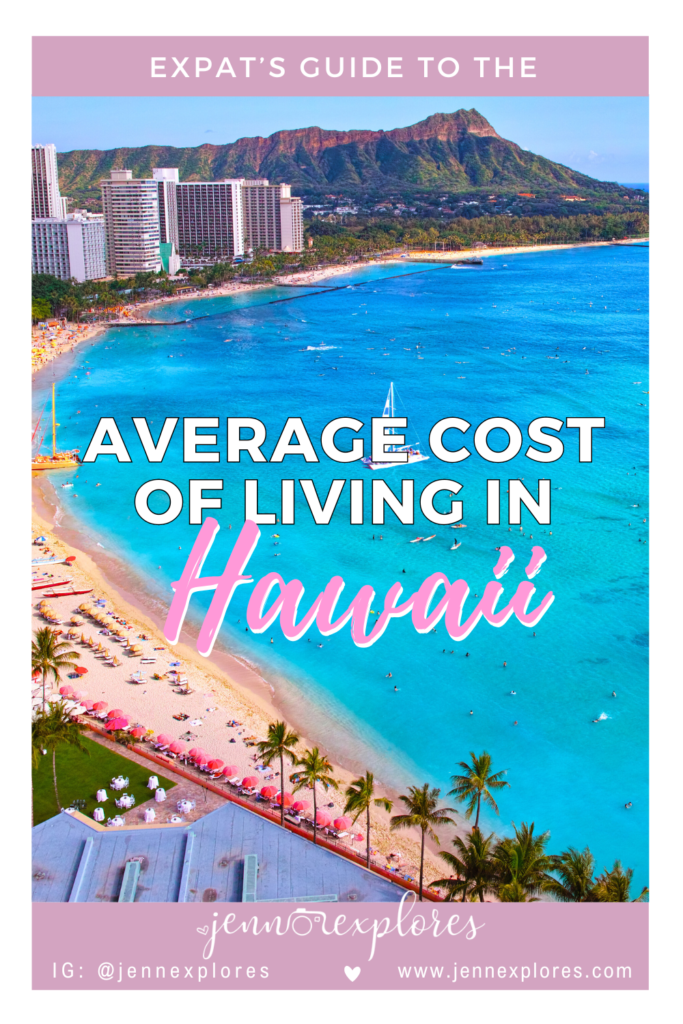
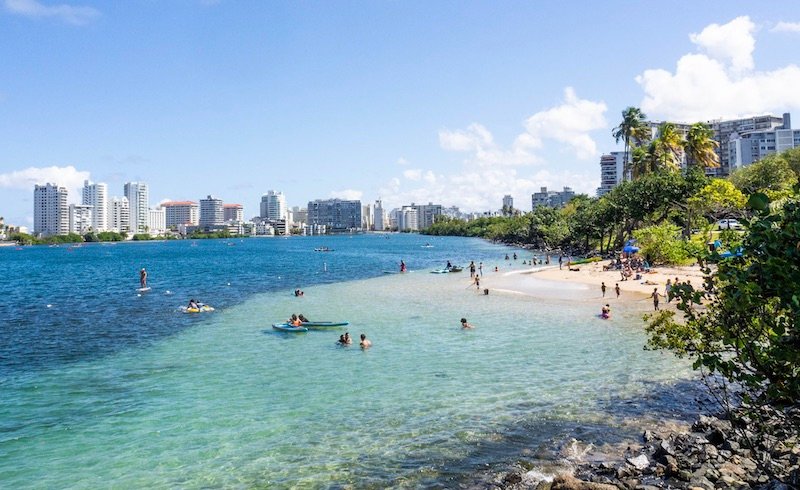
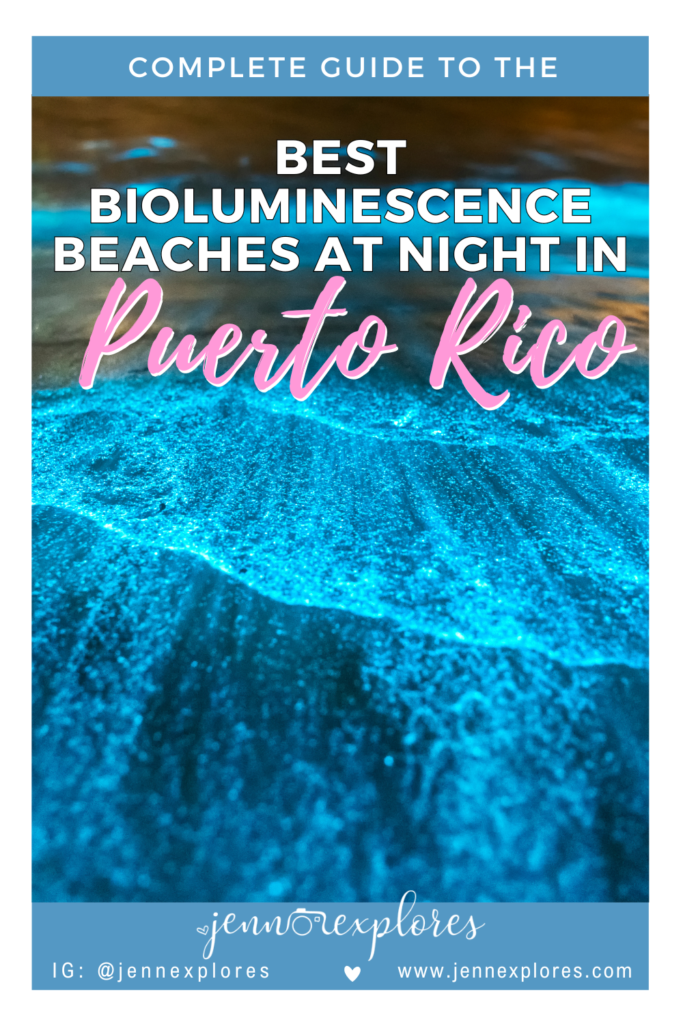
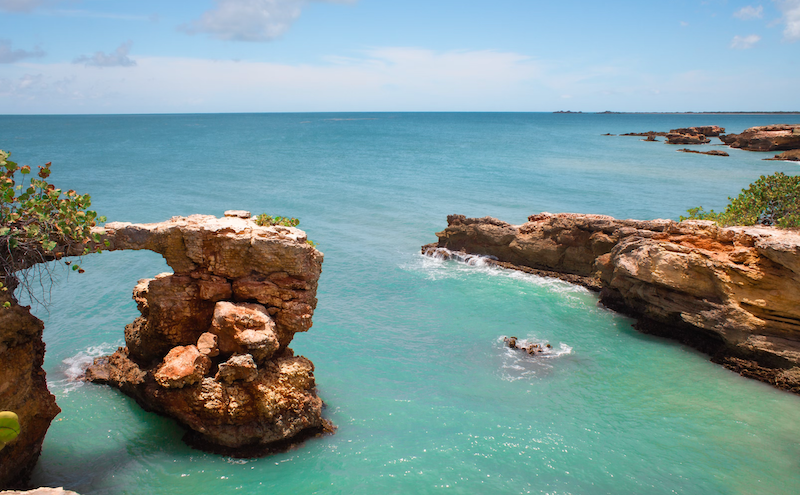
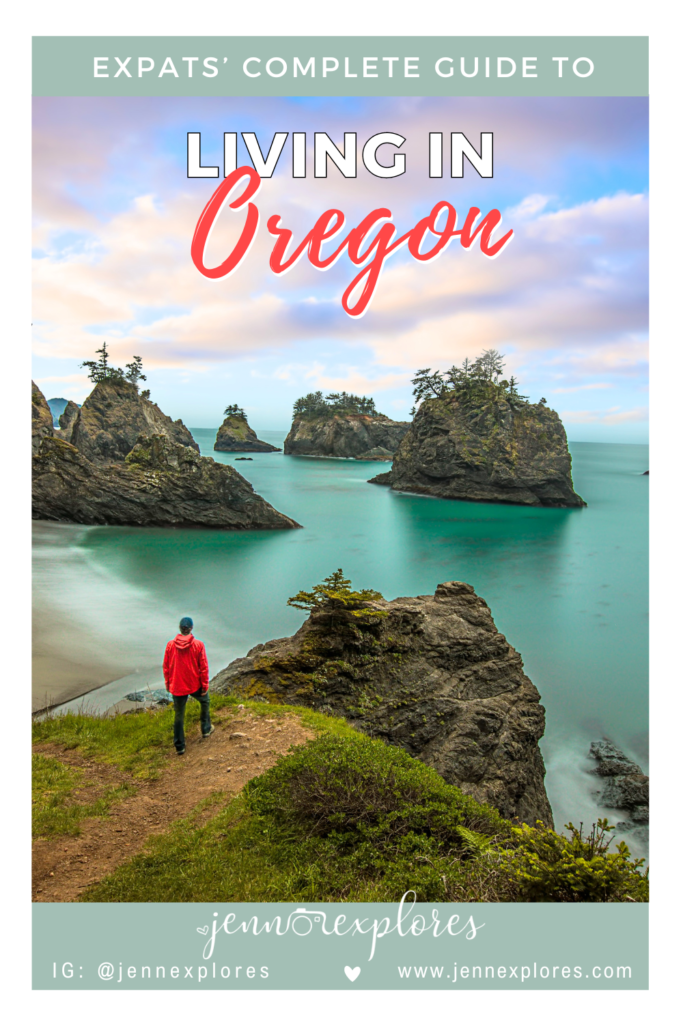
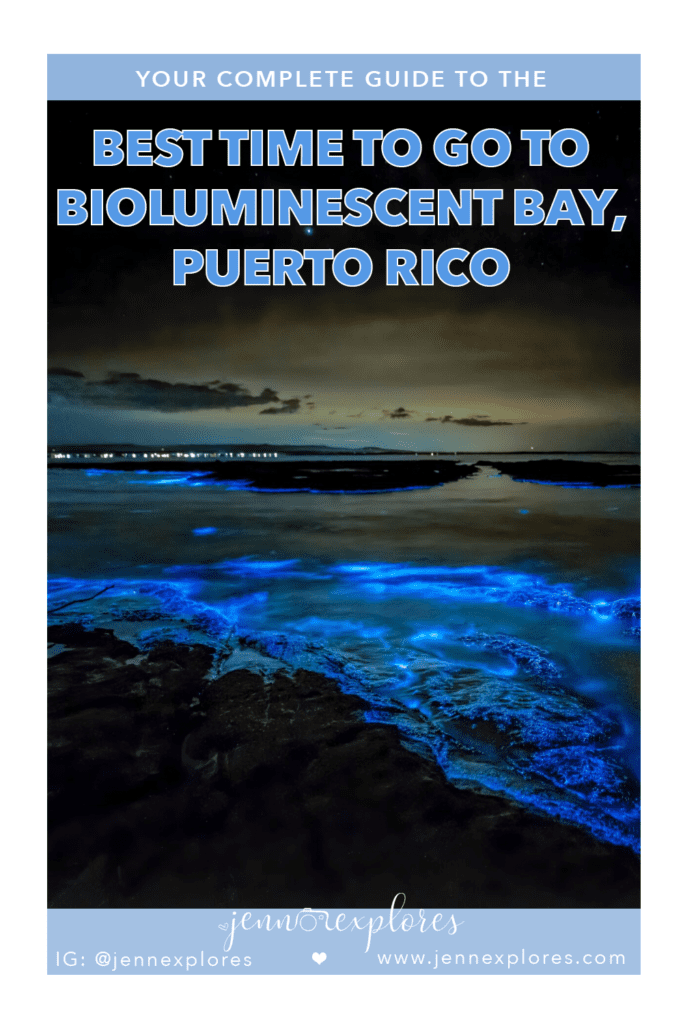
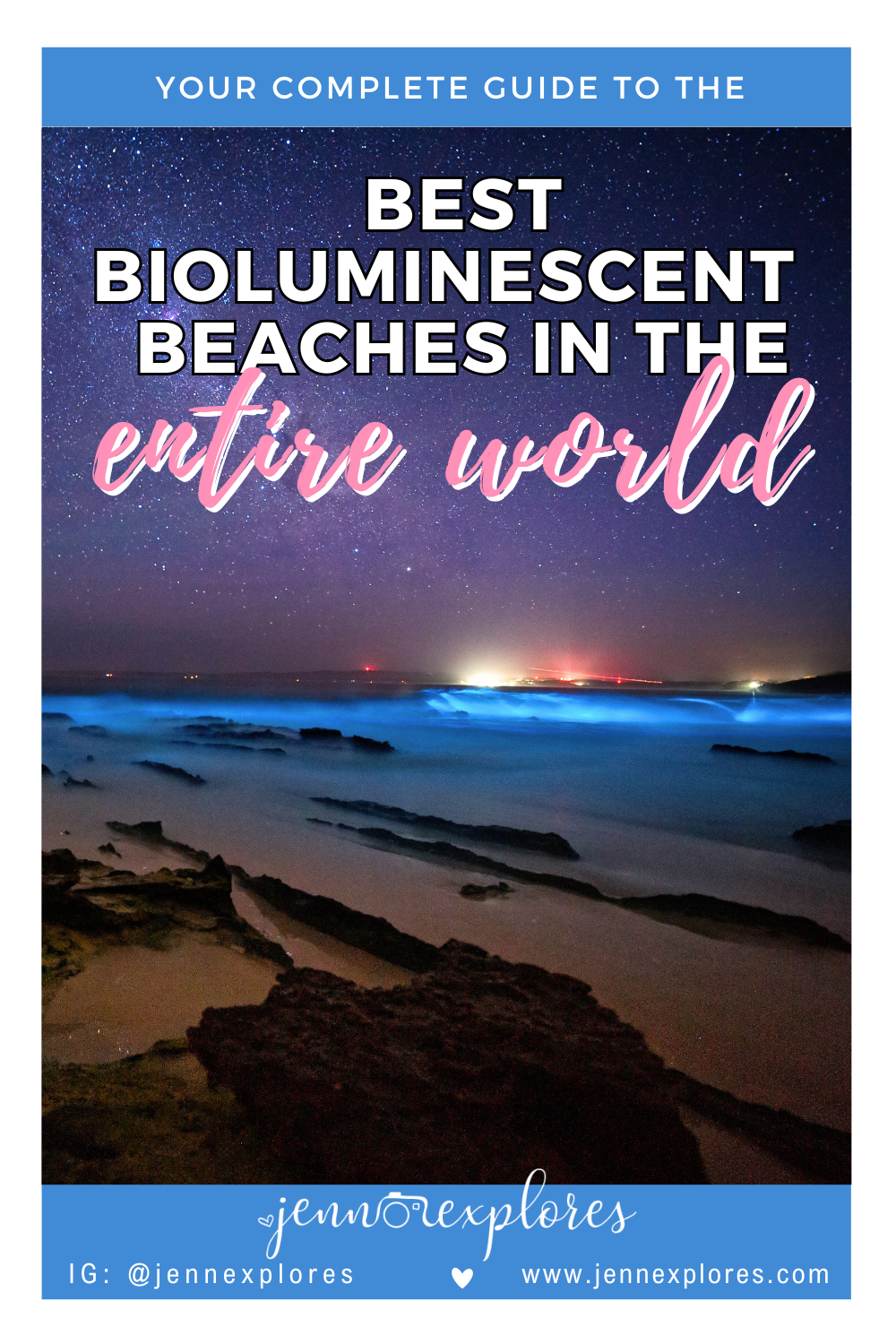










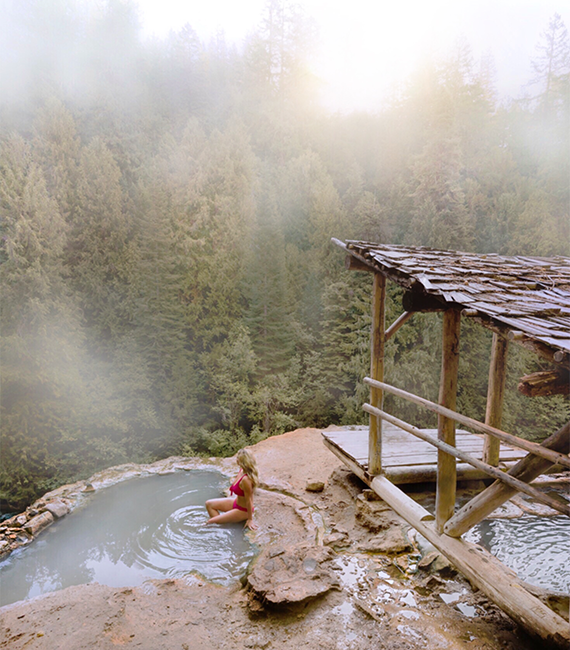
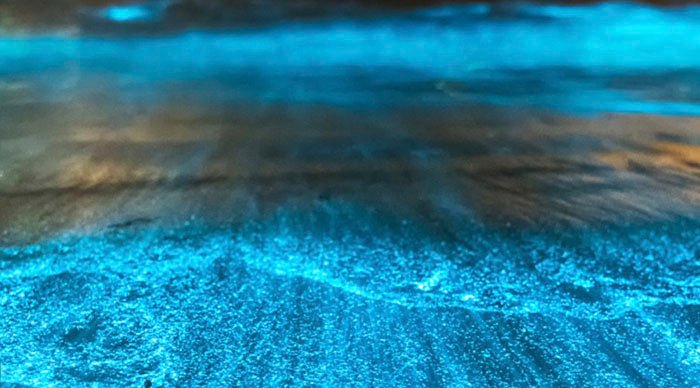
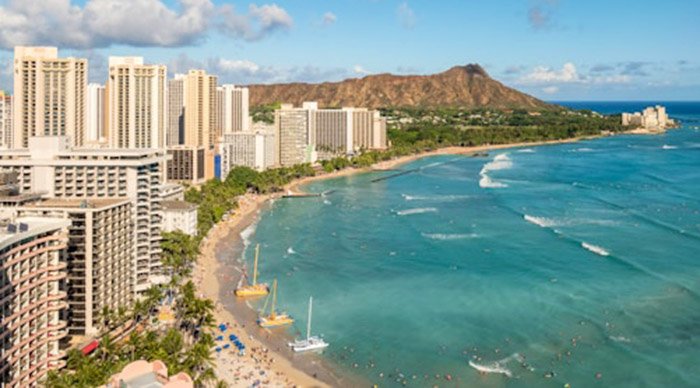

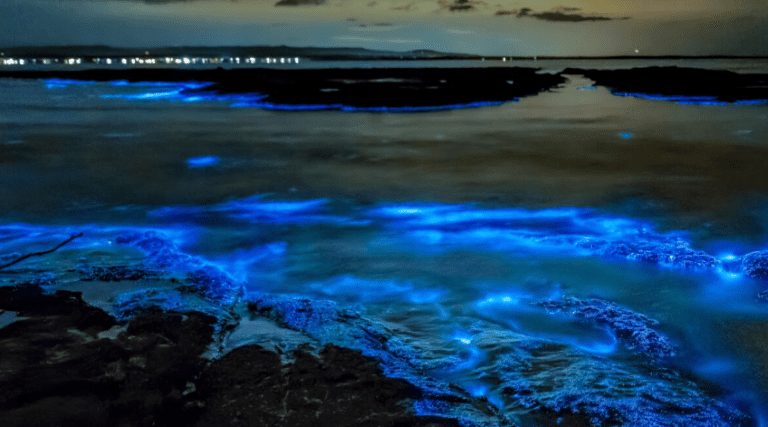
leave me a comment